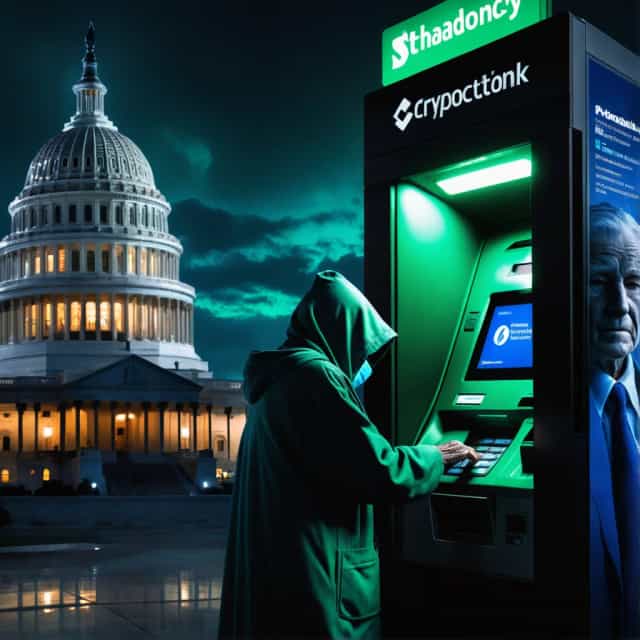
출처: Block Media
U.S. Dollar Weakens Near Three-Year Lows Amid Fed Policy Shifts and Global Economic Dynamics
Dollar Declines as Interest Rate Differentials Narrow
The U.S. dollar has reached its weakest level in three years as mounting speculation around an impending shift in Federal Reserve (Fed) monetary policy coincides with narrowing interest rate differentials between the U.S. and other major economies. Concerns over slowing employment growth, coupled with dovish signals from Fed officials, have triggered a wave of dollar selling and safe-haven demand for alternative assets.
As of October 24 (Korea time), the Dollar Index (DXY) closed at 96.76, down significantly from last year’s peak of 106 and nearing its three-year low of 96.2 registered the previous week. The weakening dollar has simultaneously fueled a rise in commodity prices, with December gold futures surging to $3,815.7 per ounce—an all-time high—representing a 1.08% increase from the prior day's close.
Fed Officials Signal Policy Shift Amid Employment Concerns
Key to the dollar’s downturn are recent remarks by Fed officials hinting that a policy shift may be on the horizon. Fed Governor Michelle Bowman recently stated, “The labor market is losing momentum,” emphasizing the need for preemptive action to address economic challenges. Her comments are widely interpreted as signaling the possibility of an earlier-than-expected interest rate cut.
Fed Chair Jerome Powell echoed similar sentiments in a speech, noting that while inflation remains an upside risk, employment faces mounting downside risks in the near term. Powell highlighted that policymaking must navigate a complex landscape, with both inflation and labor market challenges shaping decisions. Additionally, Chicago Fed President Austan Goolsbee pointed out that current interest rates remain 100 to 125 basis points above neutral levels, suggesting substantial room for easing within the year.
These dovish statements have reverberated across financial markets, leading to a weaker dollar, lower bond yields, and heightened expectations for rate cuts among gold and forex investors.
Political Interference Fuels Concerns Over Fed Independence
Growing fears of political interference in the Federal Reserve have compounded pressures on the dollar. Reports of efforts by former President Donald Trump to remove Fed Governor Lisa Cook, alongside attempts to install Stephen Moore in a dual role on both the Fed Board and as a White House advisor, have raised alarms among foreign investors.
Such controversies are undermining confidence in the Fed’s independence, sparking concerns about the predictability of U.S. monetary policy on the global stage. These uncertainties have led some investors to shy away from dollar-denominated assets, further contributing to the dollar's decline.
Narrowing Rate Differentials with Global Peers
The shrinking interest rate gap between the Fed and other major central banks has intensified downward pressure on the dollar. The European Central Bank (ECB) recently hinted at ending its rate-cutting cycle, driving the euro to a four-year high against the dollar. At the same time, the Bank of Japan (BoJ) refrained from ruling out potential rate hikes, which has further strengthened the yen.
With the relative advantage of U.S. interest rates eroding, global currencies like the euro and yen are finding renewed strength, amplifying the dollar’s weakness in foreign exchange markets.
Safe-Haven Demand Drives Gold ETFs and Precious Metals
Amid the volatility surrounding the dollar, investors are increasingly turning to safe-haven assets such as gold and silver. Gold ETFs have experienced a surge in inflows, with holdings climbing to their highest levels in three years. Silver ETFs have similarly seen robust demand, demonstrating a strong appetite among investors for precious metals as uncertainty continues to grip global markets.
These trends underscore rising fears over potential economic and geopolitical risks, alongside growing distrust in dollar-denominated assets.
Treasury Yields Fall as Market Prices In Rate Cuts
The anticipated easing of monetary policy has had significant implications for the U.S. Treasury market. Yields on the 10-year Treasury note dropped to 4.26%, marking a decline of nearly four basis points compared to the previous day’s close. This downward trend in yields is further bolstering selling pressure on the dollar.
Meanwhile, the probability of an October Federal Open Market Committee (FOMC) rate cut has climbed to an overwhelming 91%, according to market pricing. Analysts predict that this dynamic—a confluence of lower interest rates, persistent dollar weakness, and heightened demand for safe-haven assets—is likely to remain dominant over the near term.
Conclusion
The U.S. dollar’s sharp decline reflects a complex interplay of domestic and global economic forces. Fed officials’ dovish stance, narrowing rate differentials with other major economies, and concerns over political interference are weighing heavily on the greenback, while stoking demand for alternative assets like gold, silver, and Treasury bonds. As market participants increasingly price in rate cuts and safe-haven flows surge, the dollar faces continued downward pressure. Investors will remain focused on Fed policy updates and global economic developments to gauge the trajectory of these unfolding trends.










